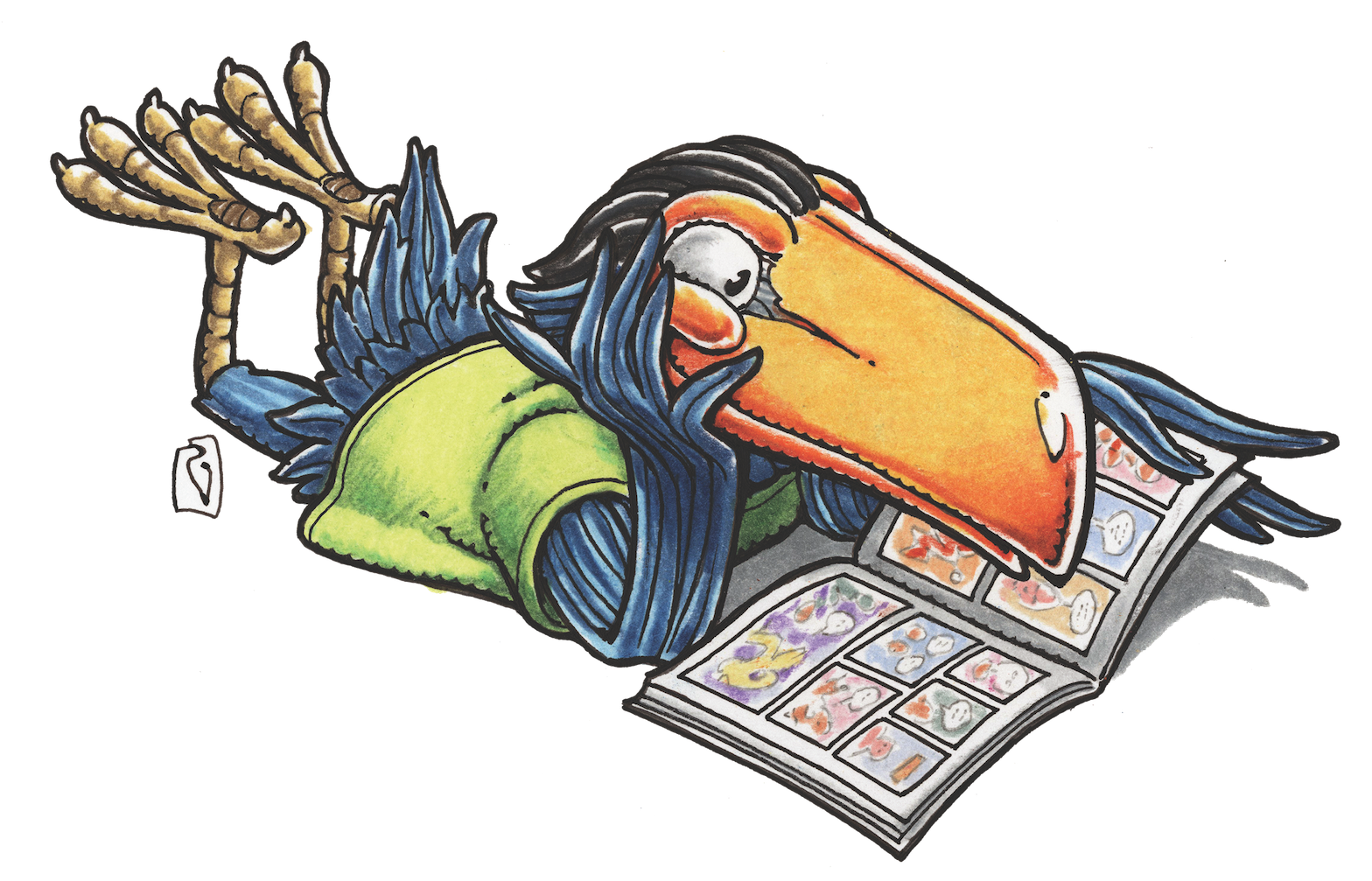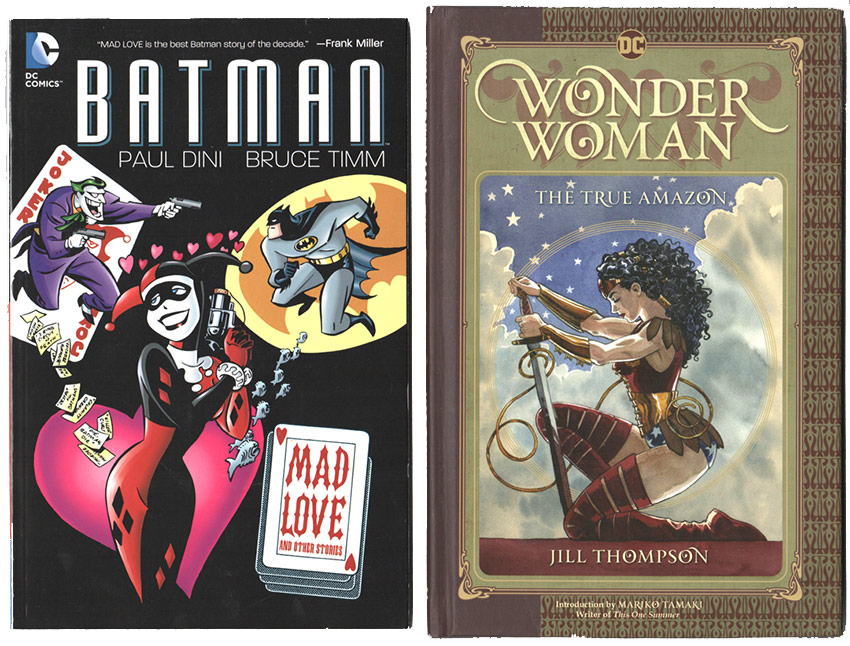MAGGIE’S WORLD BY MAGGIE THOMPSON
Maggie’s World 058: Done in One


As I recall, I came up with the expression “Done in One” around 1994. It might have been in an editorial or in a review; in either case, it was in an issue of Comics Buyer’s Guide.
Why did I feel a need to create the term?
The reason was that comic books had changed in more than price by then. Sure, when I began buying comics at the age of 4, the price had been a dime—whereas in the mid-1990s, the standard tariff was 15 or 20 times that. But the cost wasn’t the reason. The reason was that my 10¢ in that earlier era had brought me at least one complete story. Sometimes several stories.
But by 1996, not only would, say, The Amazing Spider-Man (for $1.50) contain only the second part of a three-part story—but also, in order to read the complete “Media Blizzard” tale, the fan had to buy The Sensational Spider-Man (for $1.95) for the first part and Spider-Man (for $1.95) for the wrap-up.

The Olden, Golden Days …
When I was a kid, we expected comics to have a beginning, middle, and end. Whether it was in Edgar Rice Burroughs’ Tarzan, Roy Rogers Comics, Walt Disney’s Comics and Stories, or Detective Comics, we got at least one story for our dime. There might be a “back of the book” serial (“Brothers of the Spear” in Tarzan, for example), but it served much the same function as did motion-picture serials: as an add-on to the complete feature.
And many comics amounted to short-story anthologies. At random: E.C.’s Frontline Combat #10 (1953) contained such stories as the chilling “A Baby!”—and “Geronimo!” and “Napoleon!” and “Anzio!” Animal Comics #25 included complete stories featuring Albert and Pogo, Jigger, Uncle Wiggily, and Rover. Before Thor became a comic book character, Marvel’s Journey into Mystery #29 contained “Three Frightened People,” “The Black Book,” “Mr. Know-It-All, “Into Thin Air!” and “Someone Is in My Room.” Obviously, I could go on.
And they were (as we say) all in color for a dime.
This meant that it was easy—inviting—to pick up an issue that looked interesting, glance through it for validation, and jump right into the continuity. You didn’t have to be a member of the Captain Marvel Club to figure things out in Fawcett’s Captain Marvel Adventures #22 (March 26, 1943). In a little over 8 square inches, you learned that “Shazam” stood for Solomon (wisdom), Hercules (strength), Atlas (stamina), Zeus (power), Achilles (courage), and Mercury (speed). And that, “All the powers of the greatest men in the history of the world have been gathered together and placed in the hands of the boy reporter Billy Batson, when he pronounces the name Shazam—he becomes in a blinding flash of lightning the mighty Captain Marvel! Then when evil is defeated and justice again established, Marvel repeats the word and changes back to Billy! So amazing is the change that most people never realize what has happened!” On with the stories! (And, yes, that issue also carried the bonus of the first chapter of the serial titled “The Monster Society of Evil.” But it was just that: a bonus.)
You could trade comics with buddies, pick up an issue from the newsstand, or even get an issue from a benevolent relative. And you could just start reading.
But Then …
What th—! Marvel’s Fantastic Four began the way other comic books did. Each issue contained a set-up, a challenge, and the meeting of that challenge.
But hey! Fantastic Four #25 (April 1964) featured a clash between the Hulk and The Thing—and #26 (May 1964) announced that its contents would feature “the great conclusion of the epic battle.” Doggone it! A couple of bulky supers smashed each other—but couldn’t manage to wrap up the squabble in 22 pages? Heck, it even took 23 more pages!
Some of us thought that was a cop-out. It took 24¢ to get the whole story! What a rip-off!
Marvel better not try that again, you betcha.
That idea would never catch on.
Fans would rebel.
Wait and see.
Well, Heck.
Three decades later, I figured that comic books that wrapped up a complete story in a single issue needed to be identified as exceptions to multiple-issue tales. Such fare was unusual enough that it called for special notice. I still haven’t been able to locate the first time I used the term in print. Nevertheless, I asked for a fast way to point to those unusual issues, and the Comics Buyer’s Guide designer came up with a logo. In 1996, I was able to write, “Today, casual readers—especially those new to comics—may find it hard to locate a story they can read without having bought the preceding six issues or being obliged to buy the ensuing three. So, when we can, we plan to identify free-standing issues with the Done in One logo.” We invited publishers and retailers to use it, too.
Then, life got in the way. We continued to use the term “Done in One” in our pages, but opportunities to use it became fewer. Heck, our own format eventually changed.
Nevertheless, while the neat logo never caught on, the convenience and clarity of “Done in One” as a descriptor often popped up.

Eventually …
Whereas even titles from Archie are tending toward serialized story arcs these days, there are still stand-alone comics. Magazine prices are higher than they used to be, and many of today’s “Done in One” comics are books. But they are out there.
Ask for tips from your local comics shop for starters. It won’t feature that “Done in One” logo, but I bet staffers can guide you to the sort of stand-alone entertainment that has brought new readers to the field for many years. Pick up a copy of Previews while you’re there: It’s a sort of catalog of comics scheduled for shipping in a couple of months—and it’ll give you a feel for what’s out there, including brief summaries of upcoming content.
I was going to single out comics publishers that specialize in stand-alones, but you’ll be able to figure it out yourself via Previews and shop staffers. Don’t forget to look for “Done in One” books from such imprints as Graphix. For that matter, DC, Marvel, Dark Horse, Fantagraphics, PS Artbooks, IDW, and Yoe Books are not alone in continuing to bring vintage material to new readers, with enough stand-alone stories to supply many months’ worth of entertainment. Heck, you’ll see that Archie is continuing to provide hefty collections of its old, stand-alone Riverdale stories, even while its ongoing series now feature multi-issue story arcs.
And hey! There’s another opportunity coming up in which to grab “Done in One” comics specially designed as jumping-on points for new readers. Not only is May 5 Cinco de Mayo, but this year it’s also Free Comic Book Day. That’s when comics shops buy tons of comics that they, in turn, will give away to customers. (By the way, the shops have to pay for the freebies they give away, so it’d be nice if you buy something while you’re there. But I digress.) Many FCBD issues provide stand-alone stories that do what so many comics have done over the years: introduce readers to the fun of combinations of words and pictures.
See you in the comics shop!
Maggie’s World by Maggie Thompson appears the first Tuesday of every month here on Toucan!